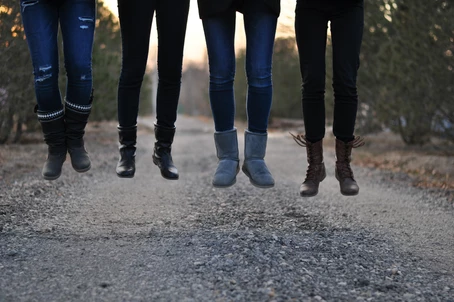Do your toes get red, itchy and sometimes painful bumps in winter?
They are probably chilblains

Chilblains are the body’s abnormal reaction to cold temperature where blood vessels in the toes (and sometimes fingers and nose) become inflamed and constrict. It is a local form of vasculitis; vascul- meaning ‘blood vessel’ and -itis meaning ‘inflammation’.
If you are affected by chilblains you will notice red or purple itchy bumps on the toes. Associated swelling can be present and they may even become painful. If the bumps aren’t attended to and they dry out, the skin can become cracked creating an entry-point for possible infection and definitely a cause for concern.
An Individual is more likely to develop chilblains if they have poor circulation to the feet (which can be due to things such as diabetes or smoking) or have a connective tissue disorder such as lupus erythematous.

Image by DermNet NZ
Avoid extreme temperature changes
Keep your feet warm and avoid extreme temperature changes when possible. A common scenario for mistake is going from a warm bed onto cold bathroom tiles barefoot. On that note, you also want to avoid direct heat as this can cause an extreme temperature change. Things to avoid are putting your feet right in front of a heater or a hot water bottle directly on the feet.
Be selective with your shoes and socks
If trying to keep your feet warm be selective about what your socks are made of. For example, merino wool is a fine fiber making it itch-free, insulating and absorbent. Another favourite for keeping the toes warm during winter are toe socks (which have come a long way since the 70’s) having each toe individually wrapped provides added warmth. Injinji make a great merino wool seamless toe sock.
Avoid ill-fitting or tight footwear, if a chilblain is forming the skin will have poor integrity and abnormal pressure from footwear (or sock seams) can lead to blisters or breaks in the skin creating an entry-point for possible infection.
Exercise and massage
Increasing blood flow to the feet with exercise will help to prevent chilblains. If you have limited mobility sitting in a chair performing foot exercises or massage will also warm the feet and improve blood flow.
How Can a Podiatrist Help?
A podiatrist will assess your feet and check your circulation with a handheld doppler ultrasound machine. A management plan may include recommendations on the use of topical creams or dressings to prevent secondary infection, advice on winter socks and footwear, prescription of foot exercises and how to avoid instigating temperature changes. If chilblains are already present the podiatrist may use a method known as ‘cocooning’ which will prevent temperature fluctuations.
Book Appointment Online (NEEDS LINK)
